Topical corticosteroids for treating phimosis in boys
- PMID: 38269441
- PMCID: PMC10809033
- DOI: 10.1002/14651858.CD008973.pub3
Topical corticosteroids for treating phimosis in boys
Abstract
Background: This is an updated version of a Cochrane Review first published in 2014. Phimosis is a condition in which the prepuce (foreskin) cannot be fully retracted past the head of the penis (glans). Phimosis is often treated surgically by circumcision or prepuce plasty; however, reports of non-invasive treatment using topical corticosteroids applied for four to eight weeks have suggested favorable outcomes.
Objectives: To assess the effects of topical corticosteroids applied to the stenotic portion of the prepuce for the treatment of phimosis in boys compared with placebo or no treatment.
Search methods: We searched CENTRAL, MEDLINE, Embase, LILACS, and ClinicalTrial.gov. We checked reference lists of included studies and relevant reviews for additional studies. There were no restrictions on the language of publication. The date of the last search was 4 October 2023.
Selection criteria: We included all randomized controlled trials (RCTs) that compared the use of any topical corticosteroid with placebo or no treatment for boys with any type or degree of phimosis.
Data collection and analysis: Two review authors independently selected studies, extracted data related to the review's primary and secondary outcomes, and assessed the studies' risk of bias. We used the random-effects model for statistical analyses and expressed dichotomous outcomes as risk ratios (RRs) with 95% confidence intervals (CIs). We contacted the authors of the primary articles to request details of the study design and specific outcome data. We used GRADE to assess the certainty of evidence on a per-outcome basis.
Main results: In this update, we identified two new studies with 111 participants, bringing the total number of included studies to 14 (1459 randomized participants). We found that types of corticosteroids investigated, participant age, degree of phimosis, type of phimosis, and treatment duration varied considerably among studies. Compared with placebo or no treatment, topical corticosteroids may increase the complete resolution of phimosis after four to eight weeks of treatment (RR 2.73, 95% CI 1.79 to 4.16; I² = 72%; 10 trials, 834 participants; low-certainty evidence). Based on 252 complete resolutions per 1000 boys in the control group, this corresponds to 436 more complete resolutions per 1000 boys (95% CI 199 more to 796 more). We downgraded the certainty of the evidence by one level for serious study limitations and by one level for serious inconsistency. Topical corticosteroids may also increase the partial resolution of phimosis at four to eight weeks of treatment compared with placebo or no treatment (RR 1.68, 95% CI 1.17 to 2.40; I² = 44%; 7 trials, 745 participants; low-certainty evidence). Based on 297 partial resolutions per 1000 boys in the control group, this corresponds to 202 more partial resolutions per 1000 boys (95% CI 50 more to 416 more). We downgraded the certainty of the evidence by one level for serious study limitations and by one level for serious inconsistency. We are uncertain of the effect of topical corticosteroids compared to placebo on change in retractability score (standardized mean difference [SMD] -1.48, 95% CI -2.93 to -0.03; I²91%; 2 trials, 177 participants; very low-certainty evidence). We downgraded the certainty of the evidence by one level for serious study limitations, one level for serious heterogeneity, and one level for serious imprecision. Compared with placebo, topical corticosteroids may increase the long-term complete resolution of phimosis six or more months after treatment (RR 4.09, 95% CI 2.80 to 5.97; I² = 0%; 2 trials, 280 participants; low-certainty evidence). Based on 171 long-term complete resolutions per 1000 boys in the control group, this corresponds to 528 more complete resolutions per 1000 boys (95% CI 308 more to 850 more). We downgraded the certainty of the evidence by one level for serious study limitations and by one level for serious imprecision. There may be little or no difference in the risk of adverse effects between topical corticosteroids and placebo or no treatment (RR 0.28, 95% CI 0.03 to 2.62; I² = 22%; 11 trials, 1091 participants; low-certainty evidence). Only two of 11 studies that recorded adverse effects reported any adverse effects; one event occurred in the corticosteroid group and six in the control group. We downgraded the certainty of the evidence by one level for serious study limitations and by one level for serious imprecision.
Authors' conclusions: Topical corticosteroids, compared to placebo or no treatment, may increase complete and partial resolution of phimosis when assessed after four to eight weeks of treatment, and may increase long-term complete resolution of phimosis assessed six or more months after treatment. Topical corticosteroids may have few or no adverse effects, and we are uncertain about their effect on retractability scores. The body of evidence is limited by poor reporting of methods in the studies, important clinical heterogeneity, and serious imprecision in the results. Future, higher-quality trials with long-term follow-up would likely improve our understanding of the effects of topical corticoids on phimosis in boys.
Copyright © 2024 The Cochrane Collaboration. Published by John Wiley & Sons, Ltd.
Conflict of interest statement
GM: none known CR: none known JC: none known BP: none known TP: none known
Figures
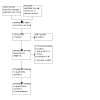
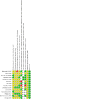

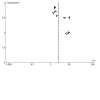
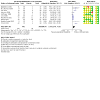
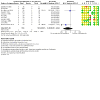




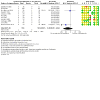
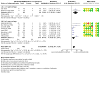
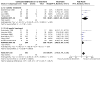
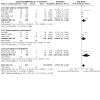
Update of
-
Topical corticosteroids for treating phimosis in boys.Cochrane Database Syst Rev. 2014 Sep 2;2014(9):CD008973. doi: 10.1002/14651858.CD008973.pub2. Cochrane Database Syst Rev. 2014. Update in: Cochrane Database Syst Rev. 2024 Jan 25;1:CD008973. doi: 10.1002/14651858.CD008973.pub3. PMID: 25180668 Free PMC article. Updated.
References
References to studies included in this review
Balamtekin 2006 {published data only (unpublished sought but not used)}
-
- Balamtekin N, Uloucak N, Atay A, Aydin HI, Karabiyik I. The effect of topical corticosteroid creams on phimosis treatment. Erciyes Tip Dergisi 2006;28(3):120-4. [EMBASE: 2006527288]
Chao 2006 {published data only}
-
- Chao SY, Liu KW, Wong MW, Leung KW, Chung KW, Kwok WK. Topical steroid therapy for phimosis: a prospective double-blind randomized study [abstract no: PS039P]. ANZ Journal of Surgery 2006;76(Suppl 1):A54. [CENTRAL: CN-00584255]
Diaz Berrocal 2006 {published data only}
-
- Díaz Berrocal J, Pérez Niño JF, Lee J, Sierra CF. Role of the topic steroids in the management of the pathological phimosis [Papel de los esteroides tópicos en el manejo de la fimosis patológica]. Urología Colombiana 2006;15:151-7.
Esposito 2008 {published data only}
-
- Esposito C, Centonze A, Alicchio F, Savanelli A, Settimi A. Topical steroid application versus circumcision in pediatric patients with phimosis: a prospective randomized placebo controlled clinical trial. World Journal of Urology 2008;26(2):187-90. [MEDLINE: ] - PubMed
Golubovic 1996 {published data only}
-
- Golubovic Z, Milanovic D, Vukadinovic V, Rakic I, Perovic S. The conservative treatment of phimosis in boys. British Journal of Urology 1996;78(5):786-8. [MEDLINE: ] - PubMed
Kiss 2001 {published data only}
-
- Kiss A, Csontai A, Pirot L, Nyirady P, Merksz M, Kiraly L. The response of balanitis xerotica obliterans to local steroid application compared with placebo in children. Journal of Urology 2001;165(1):219-20. [MEDLINE: ] - PubMed
-
- Kiss A, Pirót L, Merksz M, Nyirády P, Machay T, Király L, et al. The response rate of lichen sclerosus et atrophicus penis to local steroid application compared with placebo in children [abstract no: P-536]. Journal of the European Academy of Dermatology and Venereology 1999;12(Suppl 2):S292. [CENTRAL: CN-00478612]
Lee 2006 {published data only}
-
- Lee JW, Cho SJ, Park EA, Lee SJ. Topical hydrocortisone and physiotherapy for nonretractile physiologic phimosis in infants. Pediatric Nephrology 2006;21(8):1127-30. [MEDLINE: ] - PubMed
Letendre 2009 {published data only}
-
- Letendre J, Barrieras D, Franc-Guimond J, Abdo A, Houle AM. Topical triamcinolone for persistent phimosis. Journal of Urology 2009;182(Suppl 4):1759-63. [MEDLINE: ] - PubMed
Lindhagen 1996 {published data only}
-
- Lindhagen T. Topical clobetasol propionate compared with placebo in the treatment of unretractable foreskin. European Journal of Surgery 1996;162(12):969-72. [MEDLINE: ] - PubMed
Lund 2005 {published data only}
-
- Lund L, Wai KH, Mui LM, Yeung CK. An 18-month follow-up study after randomized treatment of phimosis in boys with topical steroid versus placebo. Scandinavian Journal of Urology and Nephrology 2005;39(1):78-81. [MEDLINE: ] - PubMed
-
- Lund L, Wai KH, Mui LM, Yeung CK. Effect of topical steroid on non-retractile prepubertal foreskin by a prospective, randomized, double-blind study. Scandinavian Journal of Urology & Nephrology 2000;34(4):267-9. [MEDLINE: ] - PubMed
Nascimento 2011 {published data only}
-
- Nascimento FJ, Pereira RF, Silva JL 2nd, Tavares A, Pompeo AC. Topical betamethasone and hyaluronidase in the treatment of phimosis in boys: a double-blind, randomized, placebo-controlled trial. International Brazilian Journal of Urology 2011;37(3):314-9. [MEDLINE: ] - PubMed
Pileggi 2007 {published data only}
-
- Pileggi F de O, Vicente YA. Phimotic ring topical corticoid cream (0.1% mometasone furoate) treatment in children. Journal of Pediatric Surgery 2007;42(10):1749-52. [MEDLINE: ] - PubMed
Romero‐Cortes 2018 {published data only}
-
- Romero-Cortes I, Leonardo-Puerta JD, Marquez-Celedonio FG. Effectiveness of the treatment with topical steroids of physiological phimosis [Efectividad del tratameinto con esteroide topico en fimosis fisiologica]. Rev Sanid Milit Mex 2018;72(5-6):300-4.
Yilmaz 2003 {published data only}
-
- Yilmaz E, Batislam E, Basar MM, Basar H. Psychological trauma of circumcision in the phallic period could be avoided by using topical steroids. International Journal of Urology 2003;10(12):651-6. [MEDLINE: ] - PubMed
References to studies excluded from this review
Ceballos‐Gonzalez 2006 {published data only}
-
- Ceballos-Gonzalez S, Torres-Cantero C, Trujillo-Hernandez B, Muniz J, Huerta M, Trujillo X, et al. Comparative effectiveness of 0.1% methylprednisolone aceponate and 0.05% betamethasone dipropionate in children with nonretractable prepuce [Comparación de la efectividad entre la aplicación de aceponato de metilprednisolona 0.1% y dipropionato de betametasona 0.05% en niños con prepucio no retráctil]. Gaceta Medica de Mexico 2006;142(2):121-4. [EMBASE: 2008418715] - PubMed
Chu 1999 {published data only}
-
- Chu CC, Chen KC, Diau GY. Topical steroid treatment of phimosis in boys. Journal of Urology 1999;162(3 Pt 1):861-3. [MEDLINE: ] - PubMed
Flatz 2015 {published data only}
-
- Flatz A, Rey-Bellet Gasser C, Elm E. Phimosis: are topical corticosteroids an alternative to surgical treatment? Praxis (Bern 1994) 2015;104(13):701-2. - PubMed
Garcia de Freitas 2006 {published data only}
-
- Garcia de Freitas R, Nobre YD, Demarchi GT, Hachul M, Macedo Jr A, Srougi M, et al. Topical treatment for phimosis: time span and other factors behind treatment effectiveness. Journal of Pediatric Urology 2006;2(4):380-5. [EMBASE: 2006354064] - PubMed
Jung 2008 {published data only}
-
- Jung SG, Bang SI, Lee SD. Effect of topical steroids (0.05% clobetasol propionate) in children with phimosis. Korean Journal of Urology 2008;49(12):1140-3. [EMBASE: 2009015319]
Kikiros 1993 {published data only}
-
- Kikiros CS, Beasley SW, Woodward AA. The response of phimosis to local steroid application. Pediatric Surgery International 1993;8(4):329-32. [EMBASE: 1993213887]
Nobre 2010 {published data only}
-
- Nobre YD, Freitas RG, Felizardo MJ, Ortiz V, Macedo Jr A. To circ or not to circ: clinical and pharmacoeconomic outcomes of a prospective trial of topical steroid versus primary circumcision. International Brazilian Journal of Urology 2010;36(1):75-85. [MEDLINE: ] - PubMed
Sookpotarom 2013 {published data only}
-
- Sookpotarom P, Asawutmangkul C, Srinithiwat B, Leethochawalit S, Vejchapipat P. Is half strength of 0.05 % betamethasone valerate cream still effective in the treatment of phimosis in young children? Pediatric Surgery International 2013;29(4):393-6. [MEDLINE: ] - PubMed
Yang 2005 {published data only}
-
- Yang SS, Tsai YC, Wu CC, Liu SP, Wang CC. Highly potent and moderately potent topical steroids are effective in treating phimosis: a prospective randomized study. Journal of Urology 2005;173(4):1361-3. [MEDLINE: ] - PubMed
Zampieri 2005 {published data only}
-
- Zampieri N, Corroppolo M, Camoglio FS, Giacomello L, Ottolenghi A. Phimosis: stretching methods with or without application of topical steroids? Journal of Pediatrics 2005;147(5):705-6. [MEDLINE: ] - PubMed
Zampieri 2007 {published data only}
-
- Zampieri N, Corroppolo M, Zuin V, Bianchi S, Camoglio FS. Phimosis and topical steroids: new clinical findings. Pediatric Surgery International 2007;23(4):331-5. [MEDLINE: ] - PubMed
References to ongoing studies
EudraCT 2006‐003779‐11 {published data only}2006‐003779‐111212
-
- EudraCT 2006-003779-11. Treatment of phimosis with topical mometasone furoate application. www.clinicaltrialsregister.eu/ctr-search/search?query=2006-003779-11 2006.
ISRCTN64387412 {published data only}N64387412N0453141246
-
- ISRCTN 64387412. Randomisation to topical corticosteroids or placebo for the treatment of the non-retractile foreskin. www.isrctn.com/ISRCTN64387412 (first received 9 September 2005).
NCT01108198 {published data only}
-
- NCT01108198. Treatment of phimosis with topical steroid cream-double-blind, randomized, placebo-controlled study. clinicaltrials.gov/study/NCT01108198 (first received 20 April 2010). [NCT: 01108198]
Additional references
Berdeu 2001
-
- Berdeu D, Sauze L, Ha-Vinh P, Blum-Boisgard C. Cost-effectiveness analysis of treatments for phimosis: a comparison of surgical and medicinal approaches and their economic effect. BJU International 2001;87(3):239-44. [MEDLINE: ] - PubMed
Boksh 2017
Breau 2010
-
- Breau RH, Gaboury I, Scales CD Jr, Fesperman SF, Watterson JD, Dahm P. Reporting of harm in randomized controlled trials published in the urological literature. Journal of Urology 2010;183(5):1693-7. - PubMed
Bréaud 2005
-
- Bréaud J, Guys JM. Phimosis: medical treatment or circumcision? [Decalottage ou circuncision: quelle indication dans le phimosis?]. Archives de Pediatrie 2005;12(9):1424-32. [MEDLINE: ] - PubMed
Canadian Urological Association Guideline 2017
Cathcart 2006
-
- Cathcart P, Nuttall M, Meulen J, Emberton M, Kenny SE. Trends in paediatric circumcision and its complications in England between 1997 and 2003. British Journal of Surgery 2006;93(7):885-90. [MEDLINE: ] - PubMed
Chu 1999
Covidence [Computer program]
-
- Covidence systematic review software. Melbourne, Australia: Veritas Health Innovation, 2022. Available at covidence.org.
Dawson 1996
European Association of Urology Guideline 2001
European Association of Urology Guideline 2018
-
- Radmayr CG, Bogaet HS, Dogan R, Kocvara JM, Nijman R, Stein S, et al. European Association of Urology, Paediatric Urology Guideline. uroweb.org/guideline/paediatric-urology/ 2018.
Farshi 2000
Gairdner 1949
GRADEpro GDT [Computer program]
-
- GRADEpro GDT. Mc Master University (developed by Evidence Prime). Hamilton (ON): Mc Master University (developed by Evidence Prime), 2015. Available at gradepro.org.
Guyatt 2008
-
- Guyatt GH, Oxman AD, Vist GE, Kunz R, Flack-Ytter Y, Schünemann HJ, et al. GRADE: what is "quality of evidence" and why is it important to clinicians? BMJ (Clinical Research Ed.) 2008;336(7651):995-8. [DOI: 10.1136/bmj.39490.551019.BE] - DOI - PMC - PubMed
Guyatt 2011
Higgins 2003
Higgins 2011
-
- Higgins JP, Green S (editors). Cochrane Handbook for Systematic Reviews of Interventions Version 5.1.0 [updated March 2011]. First edition. The Cochrane Collaboration, 2011.
Higgins 2019
-
- Higgins JP, Thomas J (editors). Cochrane Handbook for Systematic Reviews of Interventions. Second edition. Oxford: Wiley Blackwell, 2019.
Huntley 2003
Jasaitiene 2008
-
- Jasaitiene D, Valiukeviciene S, Vaitkiene D, Jievaltas M, Barauskas V, Gudinaviciene I, et al. Lichen sclerosus et atrophicus in pediatric and adult male patients with congenital and acquired phimosis. Medicina (Kaunas, Lithuania) 2008;44(6):460-6. [MEDLINE: ] - PubMed
Jorgensen 1993
Kikiros 1993
-
- Kikiros CS, Beasley SW, Woodward AA. The response of phimosis to local steroid application. Pediatric Surgery International 1993;8:329-42.
Kiss 2005
-
- Kiss A, Kiraly L, Kutasy B, Merksz M. High incidence of balanitis xerotica obliterans in boys with phimosis: prospective 10-year study. Pediatric Dermatology 2005;22(4):305-8. [MEDLINE: ] - PubMed
Liu 2016
-
- Jiaming L, Jin Y, Yuntian C, Sihang C, Chao X, Tuo D. Is steroid therapy effective in treating phimosis? A meta-analysis. Int Urol Nephrol 2016;48:335-42. - PubMed
Marques 2005
-
- Marques TC, Sampaio FJ, Favorito LA. Treatment of phimosis with topical steroids and foreskin anatomy. International Brazilian Journal of Urology 2005;31(4):370-4. [MEDLINE: ] - PubMed
McGregor 2007
Miguelez 2006
-
- Miguelez C, Garat JM, Recober A. Topical steroid treatment in phimosis [Tratamiento con esteroides topicos en la fimosis]. Anales de Pediatria Continuada 2006;4(3):183-8.
Moher 2009
Monsour 1999
Morris 2020
Narayan 2016
-
- Narayan VM, Cone EB, Smith D, Scales CD Jr, Dahm P. Improved reporting of randomized controlled trials in the urologic literature. Eur Urol 2016;70(6):1044-9. - PubMed
NICE‐accredited Commissioning Guide 2016
-
- British Association of Urological Surgeons, British Association of Paediatric Surgeons, British Association of Paediatric Urologists. Commissioning guide. Foreskin conditions. NICE accredited. www.baps.org.uk 2016.
Oster 1968
RevMan Web 2022 [Computer program]
-
- Review Manager Web (RevMan Web). Version 4.12.0. The Cochrane Collaboration, 2022. Available at revman.cochrane.org.
Rickwood 1999
-
- Rickwood AM. Medical indications for circumcision. BJU International 1999;83 Suppl 1:45-51. [MEDLINE: ] - PubMed
Rickwood 2000
Scales 2007
-
- Scales Jr CD, Norris RD, Keitz SA, Peterson BL, Preminger GM, Vieweg J, et al. A critical assessment of the quality of reporting of randomized, controlled trials in the urology literature. J Urol 2007;177(3):1090-4; discussion 1094-5. - PubMed
Schulz 2010
-
- Schulz KF, Altman DG, Moher D, CONSORT Group. CONSORT 2010 Statement: updated guidelines for reporting parallel group randomised trials. Journal of Clinical Epidemiology 2010;63(8):834-40. [MEDLINE: ] - PubMed
Schünemann 2011
-
- Schünemann HJ, Oxman AD, Higgins JP, Vist GE, Glasziou P, Guyatt GH. Chapter 11: Presenting results and 'Summary of findings' tables'. Cochrane Handbook for Systematic Reviews of Interventions Version 5.1.0 (updated March 2011). The Cochrane Collaboration, 2011. Available from training.cochrane.org/handbook/archive/v5.1/.
Schünemann 2019
-
- Schünemann H, Vist GE, Higgins JPT, Santesso N, Deeks JJ, Glasziou P, et al. Interpreting results and drawing conclusions. In: Higgins JPT, Thomas J, editors(s). Cochrane Handbook for Systematic Reviews of Interventions. Second edition. Oxford: Wiley Blackwell, 2019.
Shankar 1999
-
- Shankar KR, Rickwood AM. The incidence of phimosis in boys. BJU International 1999;84(1):101-2. [MEDLINE: ] - PubMed
Spilsbury 2003
-
- Spilsbury K, Semmens JB, Wisniewski ZS, Holman CD. Circumcision for phimosis and other medical indications in Western Australian boys. Medical Journal of Australia 2003;178(4):155-8. [MEDLINE: ] - PubMed
Sterne 2011
-
- Sterne JA, Sutton AJ, Ioannidis JP, Terrin N, Jones DR, Lau J, et al. Recommendations for examining and interpreting funnel plot asymmetry in meta-analyses of randomised controlled trials. BMJ 2011;343:d4002. [MEDLINE: ] - PubMed
Sun 2010
-
- Sun X, Briel M, Walter SD, Guyatt GH. Is a subgroup effect believable? Updating criteria to evaluate the credibility of subgroup analyses. BMJ 2010;340:c117. [MEDLINE: ] - PubMed
Van Howe 1998
-
- Van Howe RS. Cost-effective treatment of phimosis. Pediatrics 1998;102(4):E43-6. [MEDLINE: ] - PubMed
Vorilhon 2011
-
- Vorilhon P, Martin C, Pereira B, Clement G, Gerbaud L. Assessment of topical steroid treatment for childhood phimosis: review of the literature [Evaluation de l'efficacite des dermocorticoides pour le traitment du phimosis de l'enfant a travers une analyse de la literature]. Archives de Pediatrie 2011;18(4):426-31. [MEDLINE: ] - PubMed
References to other published versions of this review
Moreno 2011
Publication types
MeSH terms
Substances
LinkOut - more resources
Full Text Sources
Medical
Miscellaneous

